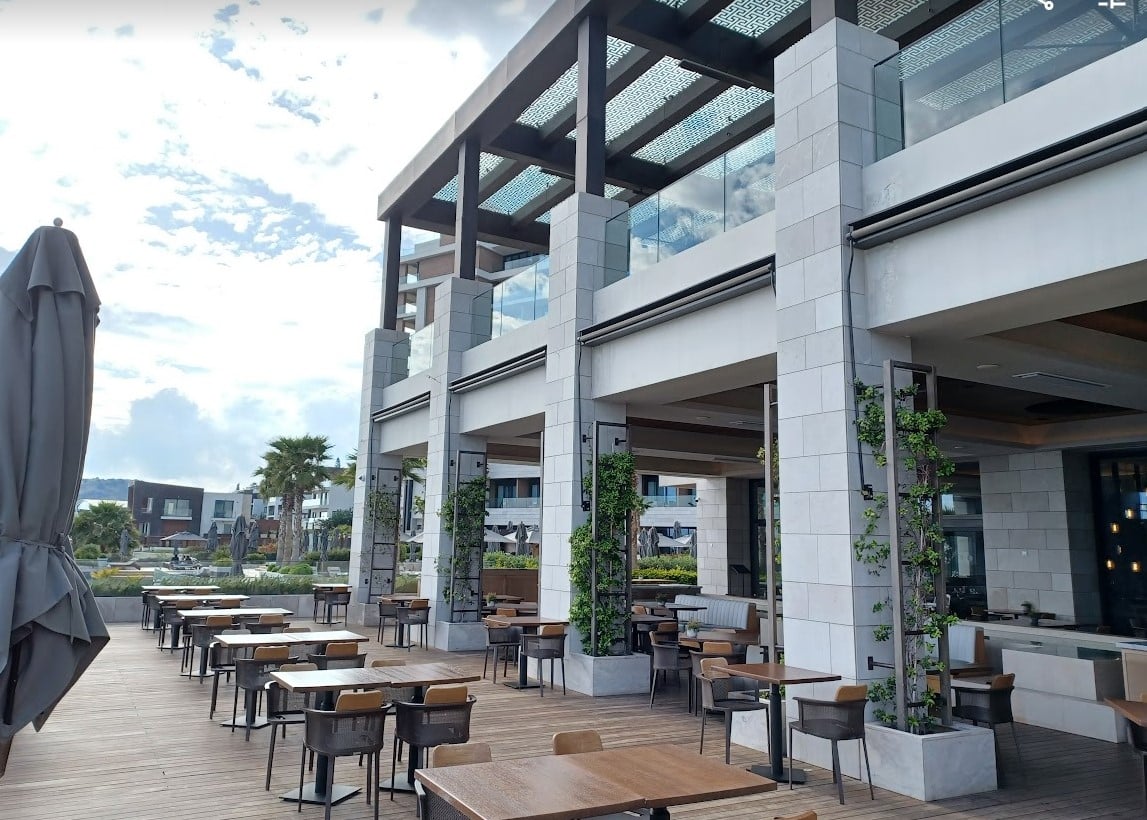Cyprus tourism sector expects full recovery by 2024, with industry stakeholders cautiously optimistic as they navigate the current set of challenges
By Kyriacos Nicolaou
The recovery of the Cyprus tourism sector is expected to continue in 2023, potentially matching the figures recorded in 2019, a bumper year for tourist arrivals, according to a report released by advisory firm EY Cyprus.
However, analysts cautioned that persisting war-related challenges are forcing various tourism sector stakeholders to reshape their strategies.
“It is encouraging to see that the Cypriot tourism sector experienced a strong rebound in 2022, in line with other destinations in the Southern Mediterranean region,” the report said.
“The promising trend was mainly driven by unleashed pent-up demand following the lifting of pandemic-related travel restrictions,” it added.
Moreover, the report warned that there “is still uncertainty and challenges facing the sector as a result of geopolitical conflicts, a weaker economic environment, staff shortages, inflationary pressures and increased costs”.
To safeguard both the industry and the economy in general, emphasis is now being placed on boosting the sector’s resilience by penetrating new tourist feeder markets, enhancing the quality of the tourist product, and further developing existing, high-value markets and relationships with key stakeholders in order to offset the loss of the Russian and Ukrainian markets.
European tourism industry
The report noted that the European tourism industry had a strong rebound in 2022, driven by pent-up demand and savings from travellers during the pandemic.
International tourist arrivals reached 576 million, almost 80 per cent of pre-pandemic levels and nearly double compared to 2021.

Crucially for Cyprus, the Mediterranean region experienced the strongest recovery, with arrivals reaching almost 90 per cent of pre-pandemic levels in some months.
However, the European Travel Commission (ETC) has cautioned that tourism recovery remains uncertain due to the ongoing war in Ukraine, the energy crisis, and high inflation.
In addition, it is projected that international travel to Europe will return to pre-pandemic levels by 2025.
What is more, after a significant decline in hotel occupancies in 2020, European hotels saw a partial recovery in 2021 due to vaccinations and health passports.
Occupancies improved further in 2022, ending the year just 11 per cent below the 2019 average.
Travel demand forecasts for 2023 remain optimistic as consumers aim to make up for lost time.
Cyprus tourism sector in 2022
In 2022, Cyprus welcomed 3.2 million tourists, reaching 80 per cent of the levels seen in 2019, the report recalled.
The loss of approximately 800,000 Russian tourists was mitigated by attracting visitors from new markets, particularly Germany and Poland.
The United Kingdom remained the key driving force, accounting for 1.2 million arrivals, representing nearly 40 per cent of the total tourists for the year.
Cyprus reported the highest growth rate in tourist arrivals from Germany compared to other European destinations, while France and Italy also showed significant growth potential for the island.
The penetration of new European markets boosted arrivals from the EU, accounting for 41 per cent of total tourist arrivals in 2022, compared to 26 per cent in 2019.
Tourism revenue increased to €2.4 billion in 2022, close to the pre-pandemic record of €2.7 billion.
Importantly, visitors spent more per trip in Cyprus in 2022, with longer stays and higher average daily expenditure per tourist.
The average length of stay increased from 9.0 days in 2019 to 9.5 days in 2022, while average daily expenditure rose from €76 to €82.
Tourists from the UK, Israel, Russia, and other markets
Regarding the future outlook for the sector, the report said that “reserved optimism among local stakeholders indicates that tourist arrivals can recuperate in 2023 and reach the 2019 record year arrivals”.
“However, several obstacles remain, including the ongoing war in Ukraine and its impacts, the economic downturn in a number of key feeder markets (like the United Kingdom), the continued volatility in energy costs and fuel prices that are impacting airfares and holiday packages, and inflationary pressures, among other things,” it added.

Another aspect of the report concerns the view of key tourism stakeholders. To better understand this angle, EY teams carried out interviews with top industry players in the first quarter of 2023 to obtain their views on the Cypriot tourism sector going forward.
These included executives, owners, and departmental heads of hotels across all classes, as well as operators, who shared their sentiments on different topics, including financial, operational, and strategic considerations.
Unsurprisingly, all participants stated that the United Kingdom will continue being the dominant tourist feeder market for Cyprus for the foreseeable future.
“There is reserved optimism that tourist arrivals from the UK could reach or even
exceed 2019 levels in 2023,” the report said.
Regarding the Nordic countries, around 63 per cent of participants cited that tourists from the Scandinavian countries of Sweden, Norway and Denmark will be an important contributor to tourist arrivals in 2023.
In addition, some respondents projected that relevant arrivals are predicted to grow by 10-15 per cent in their hotels in 2023 compared to 2022.
A quarter of correspondents, meanwhile, noted that although the vast majority of Russian visitors were lost after the imposition of relevant sanctions, said they still receive
some business from Russian tourists, especially in 5-star hotels.
Additionally, approximately 63 per cent of participants mentioned that Israel is also expected to perform well in 2023.
Some participants said that the opening of the casino resort in Limassol could potentially help drive numbers even higher from this specific market.
“The close proximity also facilitates short breaks from the specific market,” the report said.

Cruise ship seen at
Limassol port
About half of the participants said that Poland poses an important growing market, especially for mid-tier hotels, driven by its good connectivity with Cyprus, while a similar ratio of people said that France has strong potential for 2023.
They also noted that France “should be penetrated even further in the future” and emphasised the importance of improving connectivity.
What is more, 100 per cent of participants noted that there is a healthy incoming business from Germany.
“Germany is again viewed as a market with strong growth prospects,” the report said.
“The increased current flight connectivity will further support this development,” it added.
How long will full recovery take?
According to the report, there is a consensus among participants that overall tourist arrivals in Cyprus will not recover to 2019 levels by 2023.
However, some participants expect specific hotels and chains, especially in the upper end of the market, to exceed 2019 levels in terms of both tourist arrivals and revenues this year.
The report also highlighted the faster-than-expected recovery of the MICE (meetings, incentives, conferences, and exhibitions) market.
In addition, the majority of participants anticipate that tourist arrivals in Cyprus will reach or come very close to 2019 levels by 2024.
However, around 25 per cent of participants believe that the recovery may be slightly delayed until 2025 due to geopolitical concerns and other setbacks.
Investing in growing direct bookings through improved websites and search engine optimisation is a top priority for all participants.
Also, increased visibility for job seekers is seen as a positive outcome of these efforts.
Allocating higher budgets for marketing and promotional activities is also considered essential by 50 per cent of participants.
Improving the quality of service is identified as a key area of focus for about 67 per cent of participants.

This is seen as crucial for differentiating against competitors and appealing to quality-driven markets, leading to higher guest satisfaction, repeat business, and higher average daily rates (ADRs).
Moreover, the report explained that despite current uncertainties and liquidity pressures, the majority of participants emphasise the importance of investing in further hotel infrastructure, including renovations, new food and beverage outlets, spas, and new amenities.
When asked directly about the future of the Cyprus tourism sector in the shorter term, approximately 88 per cent of participants maintained a positive outlook and expect a healthy performance in 2023, better than 2022.
The report noted that the tour operators interviewed said that they received “excellent
feedback from customers in 2022 and in general Cyprus received among the highest satisfaction scores”.
Moreover, all of the participants indicated that their pre-bookings for 2023 as of the first quarter of the year appear “really promising and in some cases are exceeding 2019 levels”.
Challenges, risks and obstacles
The war in Ukraine has had a significant impact on international tourism, affecting hoteliers through increased energy costs, supply chain disruptions, and higher finance costs.
Tourists themselves are facing challenges due to rising commodity prices, inflation, and narrowing budgets.
The hotel industry is also grappling with a staffing crisis, as skilled workers have left the sector during the pandemic and labour shortages across Europe are leading to rising wages and operational disruptions.
In terms of Cyprus, the loss of the Russian tourist market, which represented around 20 per cent of total arrivals in 2019, prompted a shift in focus to high-potential European markets.
Cyprus successfully replaced lost arrivals from Russia and is on track for full sector recovery by 2024, although, as noted above, some expect this to truly materialise in 2025.
However, the island’s dependence on airlines for inbound tourism makes it vulnerable to fare increases.
Despite inflationary pressures, Cyprus is projected to have lower inflation growth compared to the EU average, with anticipated government measures to control rising prices.

The labour shortage is affecting employment costs and operational issues, but new policies allowing the employment of third-country nationals in the tourism industry have been introduced.
Furthermore, the report noted that Cyprus offers a diverse tourist product and has seen positive results, with higher tourist arrivals in the low season compared to 2019, with the country remaining an attractive destination for holidaymakers.
Moving forward: trends and key themes
The EY report also shed light on key trends and emerging themes in the hotel industry, including a growing focus on sustainability and ESG initiatives due to rising energy prices and traveller preferences for sustainable tourism.
In addition, hotel groups are setting climate-based targets and investors are interested in understanding climate risk exposure.
Workforce development and inclusion are also being prioritised, with training programmes and hiring practices focused on equity and inclusion.
What is more, personalised services are becoming prominent through the use of machine learning and data analysis.
Hotels are customising guest experiences from booking to dining based on individual preferences, while contactless experiences are being introduced, including contactless check-in and check-out, mobile dining bookings, and round-the-clock chatbots for immediate assistance.
Hoteliers are also enhancing their websites with immersive VR tours to improve direct bookings.
Finally, participants explained that keeping up with evolving technology and providing proper training to staff is crucial for maintaining guest relationships and delivering personalised experiences.







Click here to change your cookie preferences